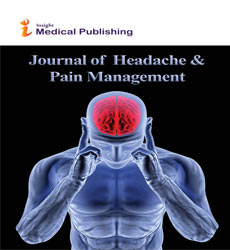Abstract
Incidental Findings on Brain MRI: Insight from HUNT MRI - A General Population Study
The aim of the study was to assess the prevalence of incidental findings on brain Magnetic Resonance Imaging (MRI) in a general population of middle aged adults. In addition, the clinical impact, follow up and postoperative outcome resulting from uncovering an incidental finding during a research study were examined. Brain MRI was performed in a general population as part of the Nord-Trøndelag Health Study (HUNT), which is a multiphase, multipurpose health study on the inhabitant’s ≥13 years in the county of Nord-Trøndelag, Norway. Only standard MRI exclusion criteria were applied to participant selection. In total, 1006 HUNT participants (530 women) between 50 and 66 years were included. The cohort was representative for the population, but participant versus nonparticipant assessment demonstrated a somewhat better health profile of those included in HUNT MRI. Scanning was performed on one 1.5T scanner with a comprehensive scan protocol, all scans were read by two senior neuroradiologists and presence of intracranial findings were evaluated based on patient hospital records and medical history obtained by phone interview. The prevalence of incidental findings on brain MRI was 29% and 15% of the relatively healthy, middle aged adults participating in HUNT MRI were referred to some type of follow-up. Acquired and developmental cerebrovascular pathologies (silent infarctions, excessive white matter hyperintensities relative to age, aneurysms, occlusion/stenosis of arteries, arteriovenous malformation, and cavernous hemangioma) were most common, followed by extra- and intra-axial brain tumors (meningioma, pituitary tumors, glioma or vestibular schwannoma). Intracranial intervention was performed 1.4% of the cohort with one postoperative deficit, giving a prevalence of 0.1% for a postoperative neurological deficit as a result of brain MRI in a research setting. Based on the HUNT MRI cohort, about 1 in 7 middle aged participants from the general population will require clinical follow up if undergoing brain MRI scanning in a research setting. Unrecognized excessive white matter hyperintensities and silent strokes were frequent findings, and demonstrate a significant potential for different types of measures aimed at preventing and/or ameliorating unidentified arteriosclerotic disease to maintain brain health in even quite healthy middle ages adults.
Author(s):
Haberg AK
Abstract | Full-Text | PDF
Share this

Abstracted/Indexed in
- Google Scholar
- Directory of Research Journal Indexing (DRJI)
- WorldCat
- Secret Search Engine Labs
Open Access Journals
- Aquaculture & Veterinary Science
- Chemistry & Chemical Sciences
- Clinical Sciences
- Engineering
- General Science
- Genetics & Molecular Biology
- Health Care & Nursing
- Immunology & Microbiology
- Materials Science
- Mathematics & Physics
- Medical Sciences
- Neurology & Psychiatry
- Oncology & Cancer Science
- Pharmaceutical Sciences
